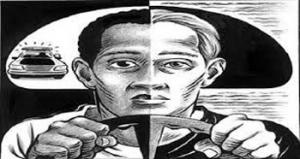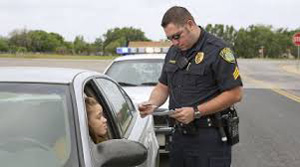
Blacks and Hispanics are stopped at a higher rate by Connecticut police officers, a new study shows. Many Connecticut police departments are stopping black and Hispanic drivers at rates higher than the minority driving populations of their cities and towns, according to data released by the state Thursday.
The numbers were compiled by researchers at Central Connecticut State University under a revamped state law designed to prevent racial profiling by police.
Researchers cautioned that there may be any number of reasons that police in some cities and towns pulled over minority drivers at higher rates and stressed the data don't necessarily mean police are racially profiling motorists.
Of the 366,000 traffic stops examined, 84 percent involved white drivers, 14 percent involved blacks and 12 percent involved Hispanics. (Drivers can be assigned to more than one ethnicity.) The state population is 84 percent white, 8 percent black, and 10 percent Hispanic.
Researchers say their estimates of minority driving populations include people of legal driving age who live in town or nearby.
About 47 percent of New Haven police's traffic stops involved black drivers, compared with the estimated black driving population of 20 percent in the city. A message was left for city police officials.
The total number of black residents in New Haven, including children under 16, is about 31 percent of the city's population, the new report says.
In Bloomfield, about 56 percent of traffic stops involved black drivers. The estimated black driving population is 32 percent. The total number of black adults and children who live in town represent about 54 percent of the town's population.
Bloomfield Capt. Stephen Hajdasz said police officials will be reviewing the data. He said officials routinely monitor the town's traffic stop data.
"Our numbers say we're right in line" with population figures, Hajdasz said.
As for stops involving Hispanics, Wethersfield police had the highest disparity, according to the report. About 31 percent of town police traffic stops involved Hispanics, while the town's estimated Hispanic driving population was 9 percent.
In New Britain, about 44 percent of traffic stops involve Hispanic drivers, while the estimated Hispanic driving population is 23 percent. And in Hartford, 33 percent of stops involved Hispanic drivers, while the estimated Hispanic driving population was 18 percent.

Messages were left Thursday for Wethersfield, New Britain and Hartford police officials.
At Southern Connecticut State University in New Haven, about 48 percent of traffic stops by campus police involved black drivers, compared with an estimated black driving population of 20 percent. That was the highest disparity in the state involving black drivers. College police officials didn't immediately return a message Thursday.
The report also includes state police data that show troopers also stopping black drivers at a disproportionate rate compared with the overall state population. About 12 percent of state police traffic stops involved black motorists, while about 8 percent of the state's population is black. Troopers pulled over Hispanic motorists at a rate nearly equal to the state's Hispanic population - about 9.7 percent of the total Connecticut population.
The racial profiling law was approved in 1999. But the effort failed in the following years when less than a third of police departments submitted the information as required to the state African-American Affairs Commission, which did not have the resources to process the data.
The legislature and Gov. Dannel P. Malloy overhauled the law in 2012.
A new computer system went live in November and began collecting a wide range of traffic stop data from all 106 police agencies in the state, including the race, ethnicity and gender of drivers, the reason for the stop and any enforcement actions taken. The report released Thursday shows information on traffic stops by police from Oct. 1, 2013, to May 31 of this year.
Copyright 2014 The Associated Press.
